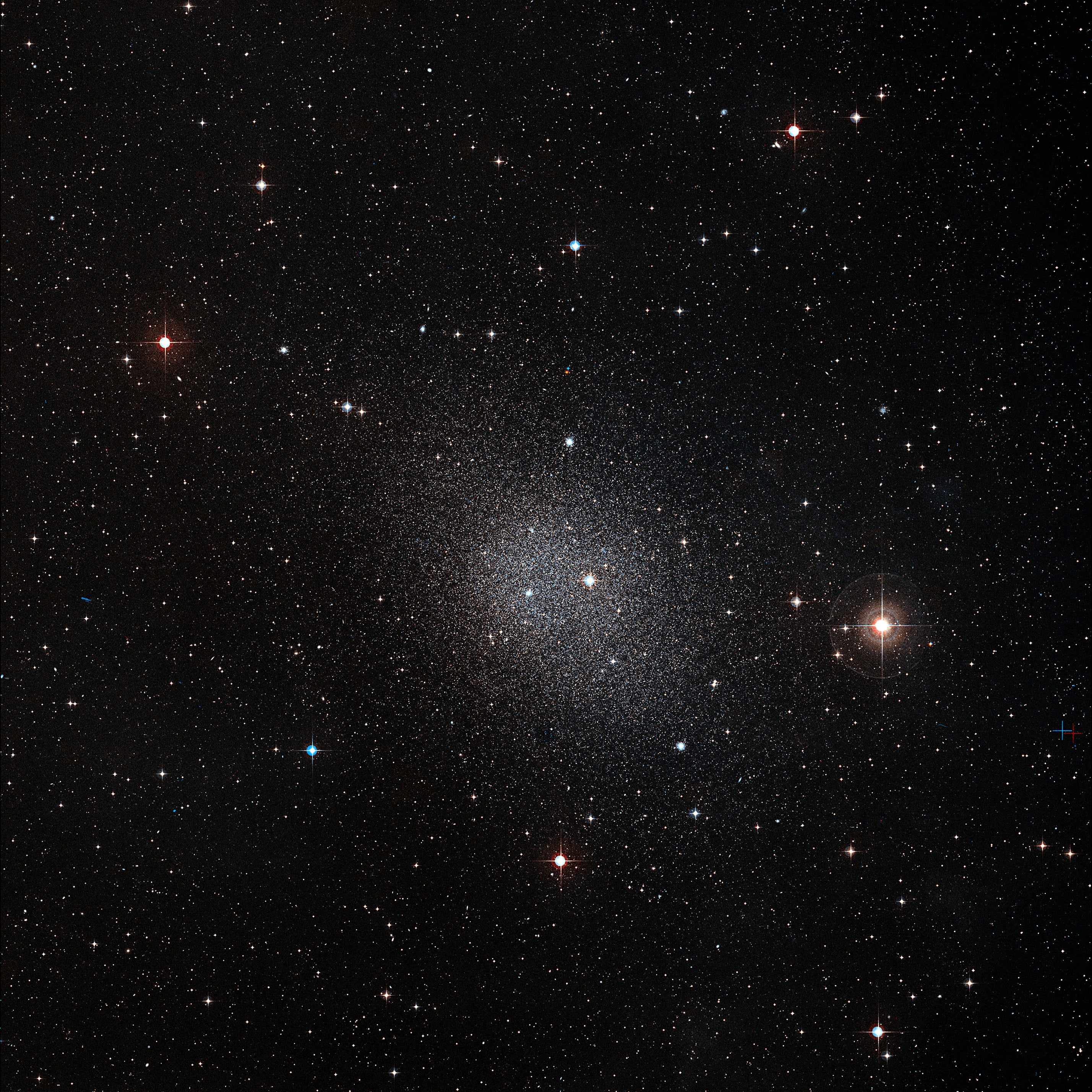
The Fornax Dwarf is a satellite galaxy of the Milky Way, and the second discovered. It was found by astronomer Harlow Shapley, shortly after he identified one in Sculptor. He described both in a 1938 Nature letter as new “stellar systems” outside the Hubble galaxy classification system.
It has a magnitude estimated at 7.4, which is spread over an area of about 20′ by 13′ — in other words, a very low surface brightness.
Unlike the Sculptor Dwarf, this dwarf is unique in that it has its own swarm of six globular clusters — a high number for a type dE4 galaxy. John Herschel discovered the brightest globular in the Fornax Dwarf system in 1835, more than a century before Shapley found the galaxy itself. Why? Because globulars are so small that their light is more concentrated, making them appear brighter and easier to find. Sculptor and the other dwarf elliptical galaxies around the Milky Way had surface brightnesses too low for past telescopes — even when they were found! Shapley discovered the Fornax Dwarf on photographic plates. It was a challenge to observe visually, requiring both a large aperture and a wide field. Today’s telescopes are a quantum leap ahead of those in the mid-20th century. In the last several decades, the number of similar satellite galaxies has grown significantly, with discoveries of objects in at least 28 other constellations.
Fornax’s globular clusters are curious for other reasons, too. Four are typically ancient, over 12 billion years old. One is about 9 billion years old, while another is very young, around 2 billion years old. Why such a wide range of ages? It is possible they came from other dwarf galaxies that no longer exist due to encounters with the Milky Way.









